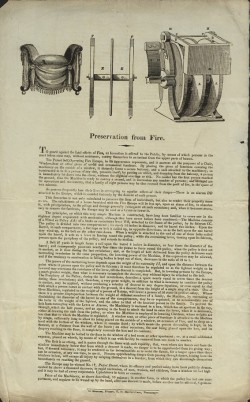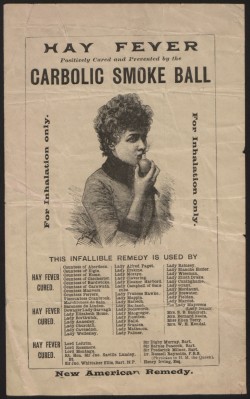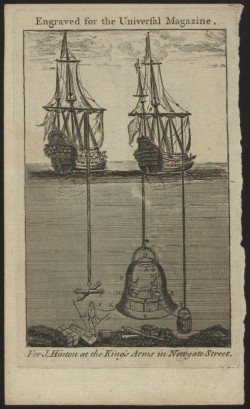Advertisement, Patent Self-Operating Fire Escape, Printed by G. Smeeton, London, Early 19th century, Inv. 14056

The patent self-operating fire escape was intended to enable evacuation from upper floors via a system of pulleys and levers. A family of eight could be safely evacuated within two minutes. The publisher of this print, George Smeeton, witnessed the total destruction of the Covent Garden Theatre by fire in 1808 and produced a pamphlet describing the “dreadful conflagration of Covent garden theatre…”. Perhaps the experience provided his motivation for publishing this advertisement.
Advertisement, Hay Fever Positively Cured and Prevented by the Carbolic Smoke Ball, England, c. 1893, Inv. 13668
Claims that the ‘Carbolic Smoke Ball’ could cure or prevent a whole array of maladies were challenged in a landmark case in the history of English contract law (Carlill v Carbolic Smoke Ball Co Ltd, 1893) after a Mrs Carlill used the ball but nevertheless contracted the flu. She was successful and awarded £100 in one of the earliest cases of consumer protection.

Etching, Halley’s Diving Bell, Universal Magazine, Printed by J. Hinton, London, 18th Century, Inv. 14068

Diving bells use water pressure to keep a pocket of air trapped in the submerged bell. In 1670, Edmond Halley developed a method of supplying the bell with compressed air to equal the pressure of displaced water, enabling deeper dives. He also devised a diving suit supplied with air from the bell via a hose, enabling a diver to work outside the bell.
